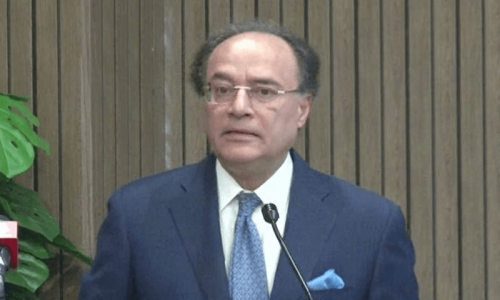KABUL: A Taliban suicide bomber detonated an explosives-laden car in Kabul on Friday outside a compound where many foreign workers are based, killing at least two local civilians, Afghan officials said.
The blast was followed by bursts of gunfire as Afghan quick-reaction forces rushed to the scene at the Green Village, a fortified residential complex not far from Kabul airport in the east of the city.
“Initial investigations show it was suicide car bomb attack,” interior ministry spokesman Sediq Sediqqi said, confirming that two civilians, including one woman, had been killed.
“A small car packed with explosives hit two vehicles as they were exiting the Green Village compound,” he added. At least four other civilians were also injured.
The Taliban militant group claimed responsibility for the strike.
“Our mujahideen targeted a convoy of foreign forces at the Green Village which is used by the Americans,” Taliban spokesman Zabiullah Mujahid told AFP.
“Heavy casualties have been inflicted on the enemy.” Taliban spokesmen often issue exaggerated casualty reports.
The Afghan capital has been relatively peaceful in recent months after a series of suicide bomb and gun attacks earlier this year when foreign compounds, the Supreme Court, the airport and the presidential palace were all targeted.
Friday's attack, the first major strike in Kabul since July, comes as pressure grows on the Afghan government to seek a peace deal with the rebels.
The US has been pushing for peace talks as 87,000 Nato combat troops prepare to leave Afghanistan next year and local security forces take on the fight against the Islamist extremists.
But a Taliban office in Qatar that opened in June to foster peace talks enraged President Hamid Karzai as it appeared to be an unofficial embassy for a government-in-exile.
The Taliban, who have been fighting a guerrilla war for 12 years, have consistently refused to hold any talks with the Afghan government, with militant leaders labelling Karzai as a puppet of the US.
Nato commanders, the Afghan government and the Taliban have all vowed to keep fighting at the same time that international efforts are made to secure a ceasefire and revive the peace process.
The Taliban were deposed in 2001 for sheltering Al-Qaeda leaders behind the 9/11 attacks on New York and Washington.
A long-delayed security deal to allow between 5,000 and 10,000 US soldiers to remain in Afghanistan after 2014 could soon be completed after talks in Kabul last week between Karzai and US Secretary of State John Kerry.
The US troops would focus on Al-Qaeda remnants and further training of the Afghan army and police.
Washington wants the security deal signed by October 31 to enable the Nato combat military coalition to plan its withdrawal by December 2014.














































